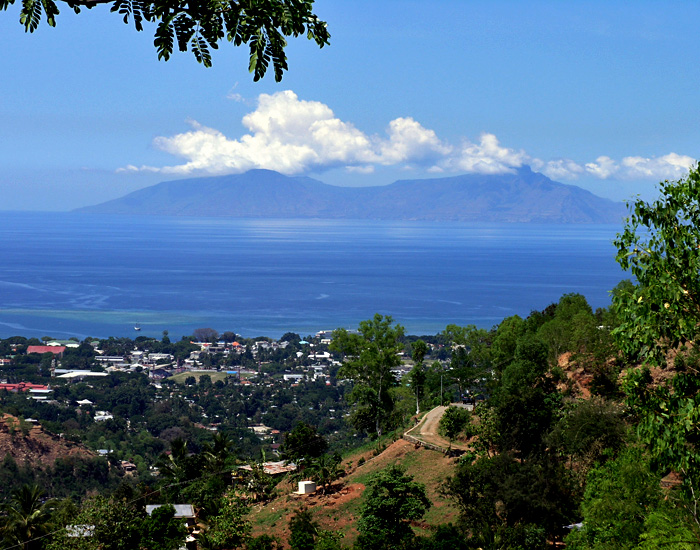
Sometimes it’s hard to know what the highlight of any particular holiday is until it’s all over. In the case of East Timor, I can confidently say that the best bit was not being eaten alive by a rogue saltwater crocodile.
It was about half way through the trip, and we were at an isolated beach for a spot of snorkelling. Our local guide, Kym, had dropped us off and then driven to a nearby restaurant to arrange lunch. “I’ll be about half an hour,” she said.
About five minutes later we were all kitted out and wading into the clear warm water. As we got to about waist deep we noticed Kym’s truck haring back along the beach. She jumped out and ran to the shoreline. “Er, guys,” she said. “I just need to mention that swimming is entirely at your own risk.” (Hrumph! Health and Safety gone mad!) “It’s just that there’s a croc in the bay. A big one. And he killed a fisherman yesterday.”
“Did it eat him?” (I thought this a sensible question, as crocodiles eat perhaps only a couple of times a year, and spend most of their time just floating about, digesting.)
“No, they recovered his body. Well, most of it. I reckon the croc’s still pretty hungry.”
We were soon out of the water.
That croc loomed pretty large over the whole day. Before we were even aware of its lurking presence it had altered our plans. Earlier we went to visit to some ancient cave paintings in the mountains. When we arrived in the village to pick up an official guide, we were told they were all busy attending a funeral. It was a fisherman, they said, who’d had a slight mishap the day before…
Then, after leaving the beach, the restaurant announced that it could serve only noodles and rice. “The local fishermen are having the day off,” we were told.
Fortunately, because of another, unrelated crocodile encounter the previous day, we had a chicken in the cold box, which was cooked up for us.
This first encounter was at one of East Timor’s main military bases, which is home to a pair of extremely large crocodiles that live in two muddy pools behind flimsy chicken wire fences. Quite why they’re kept there is anybody’s guess, but I suppose they’d come in handy during interrogation procedures — the fences were just the right sort of height to dangle people over.

How they got there was only slightly less mysterious. Apparently, after a night of fearful, almost biblical, thunderstorms, the Bishop of Dili had taken a stroll around the walled garden of his palace to check for any damage. He was disappointed to find his tomato plants almost entirely wrecked, and the pergola was going to need some repairs. And, yes, he really must do something about those two enormous crocodiles that had somehow appeared his ornamental lily pond…
At that time, which wasn’t long after the country’s independence in 2002, East Timor was still full of Australian peace keepers and charity workers, and they just happened to know of just the chap to help. So, a few phone calls were made and the late, great Steve Irwin turned up to move the beasts.
“Alright then fellas, where we taking these two beauties, ey? Back into the wild?”
“Err, no, actually Steve. We were thinking more along the lines of the army base, the minister for internal security said they might come in handy.”
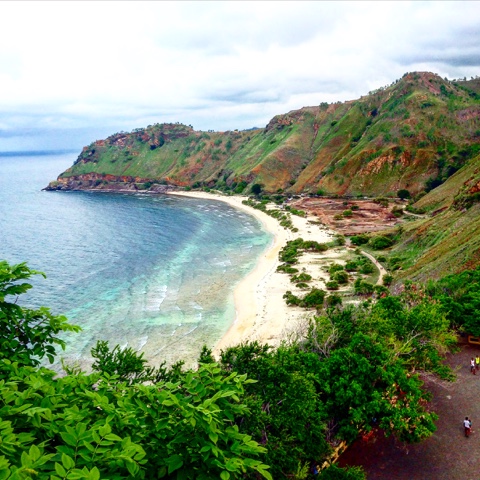
And there they’ve lived to this day. They’re no drain on the public purse, because every now and then tourists, like us, turn up to feed them frozen chickens. These are tied to the ends of poles and dangled into their lairs, which was a bit like ‘hook-a-duck’, but entirely different. (I guess when Kym bought the chickens they were buy-two-get-one-free, which is why we had one left over the following day.)
Our clumsy attempts at chicken dangling soon drew the attention of the young soldiers, who (with commendable military discipline) were just starting to get out of bed at the crack of 10am. The croc enclosures happened to be next to their open-sided wash block, and because the East Timorese seem to be remarkably vain people, and our little group included two young ladies, we suddenly found ourself in the midst of an impromptu Chippendales-type show. It must have been deliberate, as I’m sure there’s no practical reason to flex your stomach muscles while washing your hair, or gyrate your hips in time with your toothbrush. As a show, it wasn’t entirely my cup of tea, but I’m sure there’d be a market for it somewhere. They could call it ‘Crocs’n’Cocks’ or something like that.
To be fair to the minister for internal security, there is perhaps a valid reason for keeping the crocs at the base — and that’s because the crocodile is the national animal of East Timor. The story goes that when the first Timorese ancestor was just a boy, he became friends with the first crocodile ancestor. One day ‘old grandfather crocodile’ invited him to ride on his back, and take a tour of the whole wide world. After visiting all the four corners of the planet, the boy became sad, because he realised he didn’t have a land to call his own. Seeing his distress, grandfather crocodile turned himself to stone, and so created the island of Timor.
To this day the beasts are venerated, and so are logical candidates for regimental mascots. It’s also said that crocodiles never kill anybody unless they deserve it. I can only imagine how awkward that would have made the poor fisherman’s funeral. Rather than everybody sharing anecdotes about the kindness, wisdom and wit of the departed, they’d have all been speculating about what the old sod must have done. (“Have you seen his wife? She looks positively relieved the old bastard’s dead. Did I tell you she came round just the other day with two black eyes? Ooh, and don’t get me started on that fish he sold me last week. Rotten, it was, the old swindler…”)
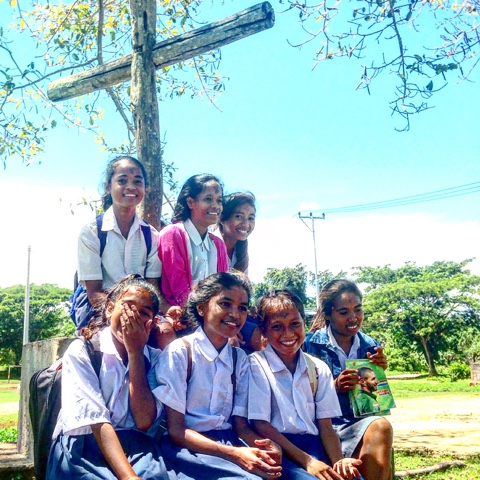
It’s hardly surprising that the people of East Timor maintain such gratitude to old grandfather crocodile for his gift of a homeland, because they’ve rarely been left alone to enjoy the benefits of his unselfish act of self-ossification. First the came the Portuguese, who ruled the Eastern half of the island for more than 500 years. They introduced Catholicism and Portuguese surnames, but did little else for their subjects. The colony was nothing more than a useful source of exotic hardwood and attracted little or no investment right until the end of the Portuguese empire in 1975.
In the meantime, East Timor had also felt the warm embrace of Japanese colonial ambition, and endured a few hellish years of occupation during World War Two. We visited an extensive network of ammunition dumps that had been hand carved out of living rock by enslaved locals, apparently there are dozens of such sites all over the island. It was quite sobering to see the individual chisel marks on the walls and ceilings.
The naughty Japs didn’t have it all their own way though, as a crack group of Australian commandos were sent to the island to maintain a guerrilla resistance. They did remarkably well, and just a few hundred of these bonza blokes tied up an entire division, ensuring they couldn’t cause any mischief elsewhere. To their very great credit, the people of East Timor worked side-by-side with the Australians, and many paid the ultimate price after the commandos were forced to withdraw from the island.
Those that survived the Japanese reprisals were becoming old men when the guerrilla warfare skills they’d learned suddenly became very useful again. After the Portuguese suddenly dropped their empire like a hot potato in 1975, that nice Mr Kissinger suggested to the Indonesians that it’d be just as well if they took over, as some of the newly emergent political parties had highly suspicious acronyms. FRETELIN, for example — assuming it wasn’t some proprietary brand of soothing medicated lotion — certainly had a whiff of the communist about it.
So the Indonesians obliged, and after a bloody invasion declared East Timor to be their 27th province. However, the East Timorese, and particularly those old men in the mountains, were determined to fight. The guerrilla resistance FALANTIL (another acronym that sounds vaguely medicinal) kept up the fight right until the UN finally decided to act in 1999. In the intervening years, it’s estimated that more than 100,000 people had fallen victim to war, famine and pestilence.
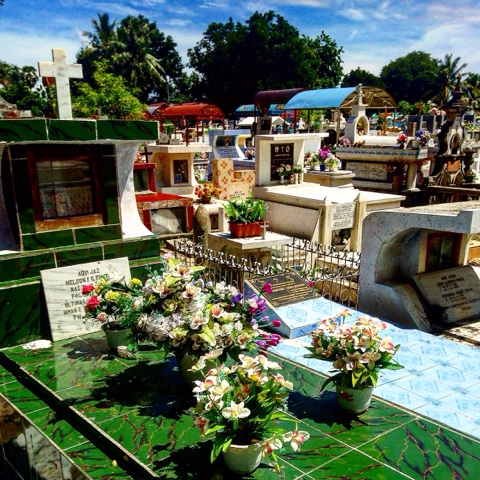
The momentum for an independent East Timor really got going in 1991, when the funeral of an 18-year-old political irritant turned into a massacre. Some 200 young mourners were gunned down, and the atrocity was captured on film by a New Zealand journalist. For the first time the world had no excuse for turning a blind eye to Indonesian occupation.
Still, it was eight years until a referendum was finally held on the future of the province, and the people voted overwhelmingly for independence. However, any happiness at this emphatic result was somewhat overshadowed by the reaction of various pro-integration militias and the Indonesian military. Together they swept through the country, burning, looting, raping and killing. The death and destruction unleashed made preceding years look like a cake walk.
With the country now a smouldering wreck, the Australians returned to restore some sort of order. By 2002 the country was ready to elect its first president and the new nation took its seat at the UN.
In an ideal world, this should be the “happily-ever-after” moment, but it’s not an ideal world. Even though it’s a tiny ethnically-homogenous country of a little more than a million people, they’ve still managed to have several coups and uprisings among themselves. Politically, the country is divided into 13 provinces, with borders based on an ancient pattern of warring kingdoms. I guess that with no outsiders left to fight they’ve gone back to some good old-fashioned local bickering. Like Yorkshire and Lancashire, but without cricket to settle their differences. The last few years have been peaceful enough, but it’s telling that such a tiny country’s parliament should include 28 separate political parties.
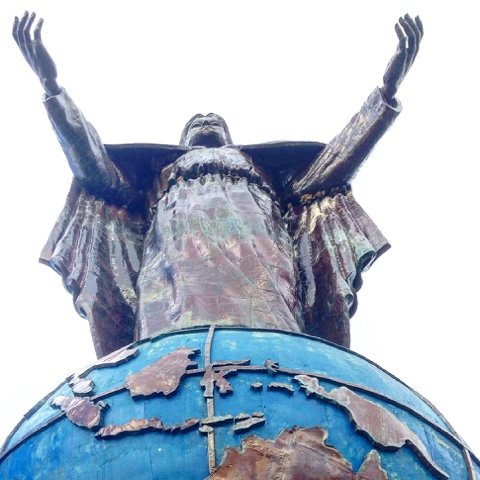
Most visitor attractions in East Timor are related to this unhappy history. It seems the government is spending all its time and money building memorials, museums and mausoleums related to their struggle. Perhaps the most impressive is the yet-to-be-completed martyr’s cemetery, which is some miles outside the capital city. When we visited there were teams of workers building a mini-motorway that stretched from the front gates up to the main building that sat atop a low hill. Most impressive, it was too. However, the road from the cemetery to Dili, like all the other roads in the country, was a complete wreck. I couldn’t help but think their priorities were a bit skewed.
It’s hard to say whether this young nation can build on the past few years, when it has enjoyed a modicum of peace. It’s got oil reserves, is reasonably fertile and could really capitalise on its natural beauty to attract more tourism (it’s currently one of the least visited countries in the world). But are the people ready to make the most of the freedom they’ve fought so hard to attain? Sadly, I think not. It seems to me that the national psyche has been irrevocably harmed by recent history — not so much the war and bloodshed, but more the external aid that flooded in to secure the peace.
The UN and various other bodies put the country back on its feet, and now the country expects to be carried. Litter is one little example. The local people drop their trash willy-nilly without a second thought. But why shouldn’t they? Before too long there’ll be a cheerful bunch of Australian gap-year volunteers arrive to pick it all up for them.
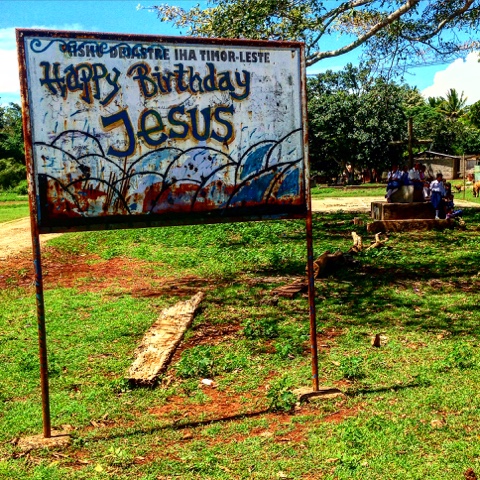
While the people of East Timor are lovely, and genuinely welcoming, they exhibit a trait that’s a real stumbling block in many developing countries — immense personal vanity at the expense of other, more worthwhile, concerns. There may be a festering rubbish tip outside their front door (with pools of fetid water creating a sanctuary for rats and mosquitoes) but their first priority is to dress up nicely and make sure their hair is neatly gelled and parted. As I say, this isn’t unique to East Timor — in my experience the worse the slum, the better groomed the people are. Now I’ve written this I feel terribly mean. After all, who am I to judge? In many ways such personal pride in the face of terrible deprivation is highly commendable. Ho hum, who knows?
As I said at the beginning of this account, it’s hard to know what the highlight of a trip is until it’s all over. Likewise, it’s also with the benefit of hindsight that you can truly know whether you want to revisit a place. In the case of East Timor — and despite anything negative I may have said — I definitely want to return.
For more travel options far off the beaten tracks, check out our friends at Young Pioneer Tours

Comments are closed.